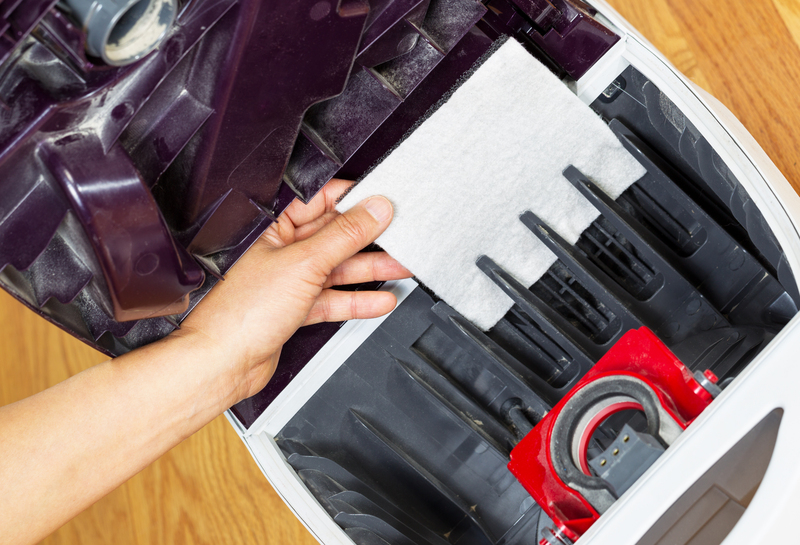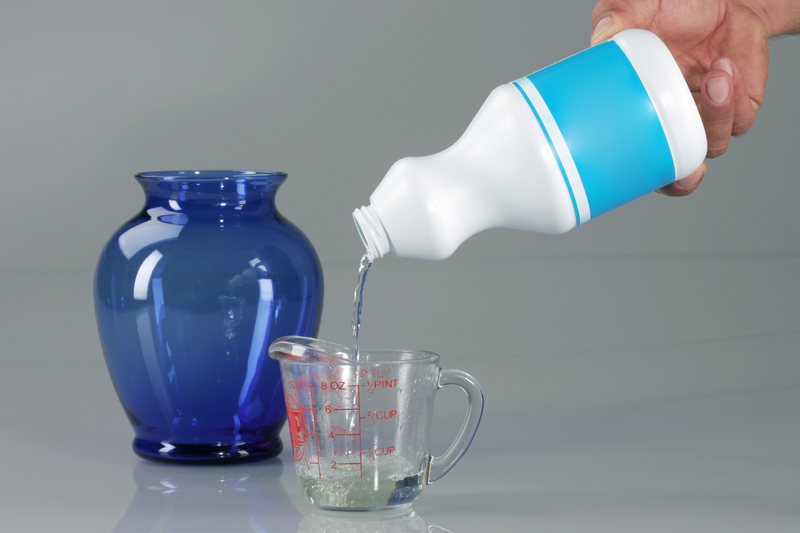Cleaning Made Easy: Remove Burnt Stovetop Residue Like a Pro
Posted on 05/10/2025
Cleaning Made Easy: Remove Burnt Stovetop Residue Like a Pro
A clean, sparkling stovetop is the hallmark of a well-kept kitchen. Yet, nothing thwarts this gleaming image faster than stubborn, burnt residue caked onto burners and surfaces after a cooking mishap. Learning how to remove burnt stovetop residue efficiently is a valuable skill for every home chef and anyone who values a pristine kitchen.
Whether you have a gas, electric, or glass stovetop, facing baked-on stains and burnt spills is inevitable. But don't fret! With the right techniques, products, and a little elbow grease, you can bring your stovetop back to its original shine--fast and without damage. In this comprehensive guide, we'll walk you through proven ways to clean burnt stove messes, share expert hacks, and help you prevent future build-up for a hassle-free cooking experience.
Why Burnt Stovetop Residue Happens--and Why You Shouldn't Ignore It
Before diving into the best methods for burnt stovetop cleaning, let's understand why this problem occurs and why you should tackle it quickly:
- Spilled food or liquids that go unnoticed can get heated repeatedly, becoming stubborn carbonized residue.
- Cooking at high temperatures accelerates burning, especially sugars and oils.
- Delayed cleaning gives stains time to set and bond with your stovetop surface, making them harder to scrub away.
Ignoring burnt-on grime can lead to:
- Unpleasant burnt odors every time you cook
- Reduced efficiency and even potential damage to burners
- Attracting pests and bacteria in extreme cases
- Permanent surface discoloration or scratches if cleaned improperly
But don't worry--no mess is too old or tough if you know the right professional methods for removing burnt stove top residue!

Choosing the Right Cleaning Method For Your Stovetop
Stovetops come in several varieties. To clean burnt stovetop residue like a pro, it's essential to know your appliance and select the safest, most effective approach:
- Gas Stovetop: Features removable grates and burners. Needs vinegar or baking soda for tough stains.
- Electric Coil: Burners can often be lifted or detached. Aluminum drip pans can be soaked separately.
- Smooth Glass/Ceramic: Highly sensitive to scratching; requires gentle scrubbing and specialty cleaners.
Always check your manufacturer's manual before using strong chemicals or abrasive tools to avoid voiding your warranty.
Must-Have Supplies for Burnt Stove Top Cleaning
- Baking soda
- White vinegar
- Soft sponges or microfiber cloths
- Straight edge razor or plastic scraper (for glass tops)
- Lemon juice
- Warm water
- Dish soap
- Gloves (to protect your hands)
- Commercial stove top cleaner (optional for glass/ceramic models)
Step-by-Step Guide to Remove Burnt Residue From Any Stovetop
1. Safety First--Let Your Stovetop Cool
Never attempt to clean a hot surface! For safety and effective cleaning, wait until your stove is completely cool before starting.
2. Remove Grates and Burner Covers
For gas and electric stoves: Lift off removable parts. Soak them in a sink filled with hot, soapy water. This loosens baked-on food and burnt oils, making them easier to scrub later.
3. Loosen the Burnt-On Mess
Sprinkle a generous layer of baking soda over the burnt stovetop residue. Spray or pour white vinegar on top--the reaction helps break down stubborn charred particles.
- Let the mixture bubble and fizz for 10-15 minutes.
- For extremely thick stains, cover the area with a damp, warm towel and let it sit for 30 minutes.
- This process works for both gas and glass cooktops.
4. Gentle Scrubbing: The Pro's Technique
With a soft sponge or microfiber cloth, scrub in circular motions. If the residue remains, make a paste with baking soda and a bit of water, then reapply and repeat.
- Never use steel wool or harsh abrasives, especially on glass or ceramic surfaces--they can cause permanent scratches.
- For really tenacious burnt spots, use a plastic scraper or edge of an old credit card. Gently lift away the residue, keeping the blade flat to avoid gouging the surface.
5. Wash and Rinse Thoroughly
After removing all burnt residue, wipe the entire stovetop with a clean, damp cloth to remove baking soda, grease, and debris. Follow with a dry towel to buff the surface to a streak-free shine.
6. Clean and Reassemble Grates & Burners
After soaking, use a non-abrasive scrub pad and a bit of baking soda for stubborn residue. Rinse, dry completely, and replace all parts on your stove.
Alternative Pro Hacks for Cleaning Burnt Stove Residue
Lemon Power for Burnt Stove Top Cleaning
- Cut a lemon in half and rub it directly onto charred or greasy stains.
- Let the juice sit for 5-10 minutes, then wipe clean with a damp cloth. The natural citric acid breaks down residue and leaves a fresh, clean aroma.
Commercial Cleaners: When to Use Them
- For severe burnt-on buildup that won't budge, a professional ceramic/glass stovetop cleaner can be highly effective.
- Spray as directed, let it sit, then buff gently with a soft cloth for a flawless finish.
Hydrogen Peroxide & Baking Soda Combo
- Mix hydrogen peroxide and baking soda to form a powerful, fizzing paste for extreme discoloration and burnt messes.
- Apply, let sit for 10 minutes, then wipe away.
Steam Method for Extra-Tough Residue
- For glass cooktops, use a steam cleaner or simply place a wet towel over the burnt area and "steam" with a hot iron (on low) for a brief moment.
- The steam will help loosen charred food from the surface for easier removal.
How to Remove Burnt Residue from All Stovetop Types
Gas Stovetops
- Focus on grates and burner caps--soak them and scrub with a stiff nylon brush.
- Be sure to clear any clogged gas ports with a pin or straightened paper clip (never toothpicks; they can break and block gas flow).
- Finish by wiping down the stainless surface with vinegar for a streak-free shine.
Electric Coil Stoves
- Gently lift coils (once cooled) and wipe down underneath.
- Drip pans can be removed and cleaned using the baking soda/vinegar soak.
- For heavy burn marks, a paste of baking soda and a drop of dish soap can lift most stains easily.
Glass or Ceramic Stovetops
- Sensitivity is key: always use non-abrasive techniques.
- Plastic scraper and specialty glass cleaner are your best friends for removing burnt residue.
- Buff with a microfiber cloth for a signature 'glass-like' gleam.
Essential Tips to Prevent Burnt Residue on Your Stovetop
You've put in the work--now keep your stove looking spotless with these easy habits:
- Wipe up spills and splatters immediately after cooking (once cooled).
- Use stove burner liners or covers to catch overflows.
- Cook on moderate heat to avoid boil-overs and burnt sugar/caramel messes.
- Make weekly stove cleaning part of your routine to prevent buildup.
- Always use cookware suited to your burner size to minimize spills.

Frequently Asked Questions: Cleaning Burnt Stovetop Residue
Can I clean burnt residue with bleach?
Bleach is not recommended for stovetops, as it can damage surfaces and isn't food safe. Stick to baking soda, vinegar, and specialty cleaners designed for kitchen use.
Is it safe to use a razor blade on a glass cooktop?
Yes, but only if you're careful. Use a flat, new razor blade held at a 45-degree angle to avoid scratching. Always follow your manufacturer's recommendations.
What if burnt residue smells bad after cleaning?
If odors persist, wipe the area with diluted white vinegar or a bit of lemon juice for natural deodorizing.
How often should I deep clean my stove?
For frequent cooks, aim for once per week to keep residue from becoming unmanageable.
The Bottom Line: Cleaning Your Burnt Stovetop Can Be Simple and Satisfying
Learning how to remove burnt stovetop residue is a skill that pays off in a spotless kitchen and a more pleasant cooking environment. Whether you prefer natural remedies or rely on modern cleaning products, it only takes a little time and the right method to achieve professional results. Make cleaning your stove top after every use a habit--your future self will thank you!
- Remember: Act fast on spills for the easiest cleaning.
- Always use non-abrasive materials for sensitive glass stovetops.
- Consistent care is the secret to a sparkling, long-lasting stovetop.
If you've enjoyed these expert tips for cleaning burnt stove tops, share this guide with your friends and family and help everyone enjoy a cleaner, healthier kitchen!




